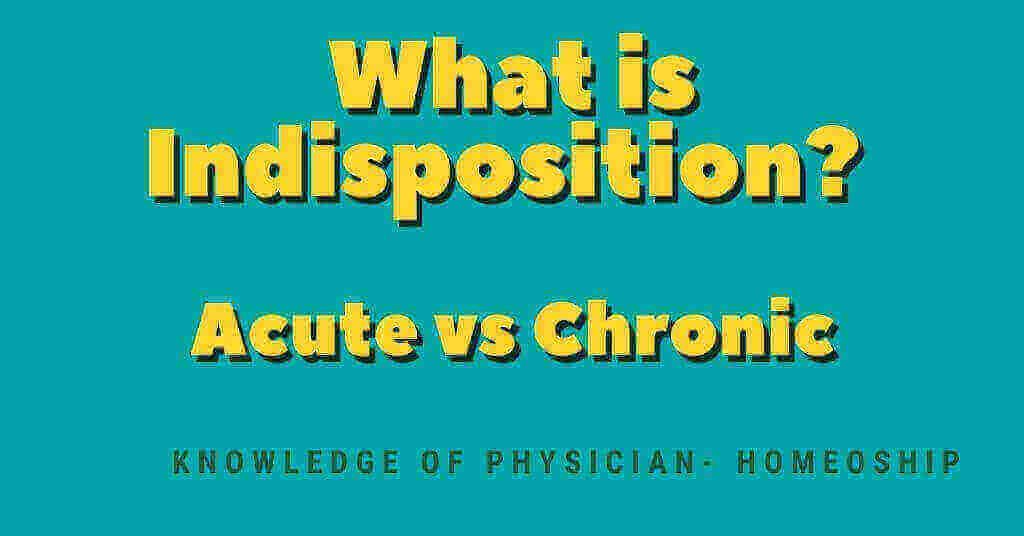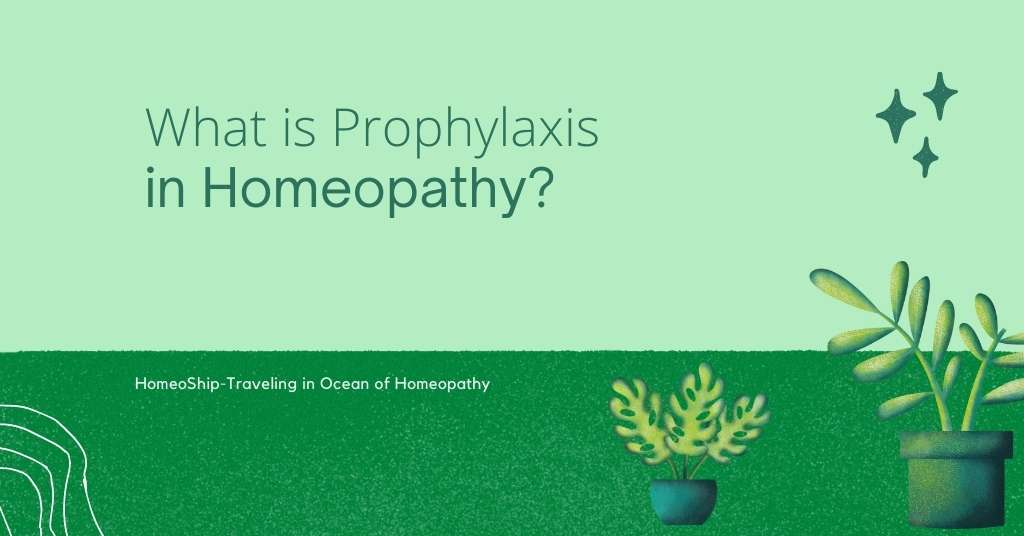Indisposition is a slight feeling of uneasiness of a very transition nature; it is also known as mimicking sickness or slight alteration of health. Indisposition should not be considered as a disease because it is just the presence of a few rival symptoms, which would be removed by a slight alteration in the diet and regime without any serious medical aid
It is not a true disease. It is a slight deviation in the state of health with one or more trivial symptoms, which can be controlled by a slight change in the diet and regimen. Indisposition does not require any remedy. For the psychological benefit of the patient, the physician can intelligently use the placebo to please the patient.
Sometimes, indisposition is due to some exciting or maintaining cause. It can be eradicated by the removal of these causes.

On the contrary, diseases that are due to miasms, cannot be cure unless dynamic medicines are administered. in cases of indisposition, the vital force is not affected or derange. So the self-protecting the quality of the vital force can eradicate it without the help of any medicine.
This shows that the indisposition is a superficial alteration whereas in diseased the vital force is primarily disarranged, so health cannot be restored without medical help.
Let’s understand indispositions with the help of an example:
- A person works under the sun for a long time which he is not habituated, then he may be suffered from a headache. In this case, is no medicine is required but after sleep and rest, the headache must be removed naturally i.e. by the vital force.
In this way, the normal state of an individual can be brought back without any medicinal help. But if the headache continues and fever, vomiting, diarrhea, great thirst, etc. symptoms accompanied it, then it should be considered seriously because the patient may be suffering from acute sunstroke, he might require medical aid.
In such cases, without medical aid, the individual’s life may be in danger so it art of the physicians to differentiate between indisposition and disease condition and to treat accordingly with prompt attention.
Let’s have some examples of how a physician should deal with indisposition.
- In a suspected case of syncope and hysterical suffering, the physician has to first remove the strong-smelling flowers from the room.
- In a case of inflammation of the eye where a foreign body is causing mechanical irritation, the physician will first remove this foreign body that is present in the cornea.
- In the case of a wounded limb that is threatened to go into mortification, the loosening of the over-tight bandage will do more good than medicine.
- In case of bleeding because of a torn artery, a ligature is more essential than medicine.
- Extraction of foreign substances that are obstructing the orifices of the body like the nose, gullet, ears, urethra, rectum, and vagina is mandatory in case of accidental swallowing by the person. When such obstruction is removed with the help of surgical instruments improvement will follow even without medicinal aid.
- Surgical removal of any calculus that is obstructing any vessel in the body and operating the imperforated anus (rectal atresia) in the newborn baby are few examples for indisposition.
- Slight exhaustion and tired feeling felt by a person because of lack of overnight sleep do not require any medicine but a night of good sound sleep.
- Overeating in a person leads to indigestion and stomach pain, this can be easily controlled by fasting and a light diet for a short period.
Read Also:
- How to become a True Preserver of Health?
- Who can treat Judiciary & Rationally? Knowledge of Physician
- What are the best books for Human Physiology?
Difference between Indisposion & Diseases
| Indisposition | Disease |
|---|---|
| Indisposition is a very superficial and mild disposition that does not require any treatment. | The disease is a serious and dynamic derangement of vital force that must be treated with dynamic medicines only. |
| Indisposition is a slight deviation in the state of health that is perceptible by only one or a few mild symptoms. | It is the alteration in the state of health expressed by morbid symptoms in the physical, mental and intellectual levels. |
| One or two mild symptoms are present in this condition. | Usually, on inquiry, many symptoms can be ascertained. |
| No medicine is generally needed. Removing the exciting cause and regulation of diet and regimen is sufficient. | Removal of exciting and maintaining causes is not sufficient. Proper and careful anti-miasmatic treatment is necessary. |
| Vital force possesses the power to recover from the disturbing harmony. | Vital force is incapable of handling this condition, it needs some dynamic aid in the form of medicines. If left the untreated vital force in some instances recovers the organism at the cost of sacrificing the physical strength of the body. |
Indisposition is divided into two types:
- Acute
- Chronic
Let’s understand both of them in detail
1. Acute
There is a slight feeling of unwellness of a very transient nature due to some exciting cause. In this condition, the vital force is not affected, so it is able to remove this condition without the help of medicine.
E.g.: Exertion, fatigue, or whole night binge-watching for headaches, etc.
2. Chronic
It is a feeling of unwellness due to some maintaining causes. So the removal of maintaining cause can remove chronic indisposition and can be done even without the help of medicines because here also the vital force is not affected.
E.g.: A Foreign body in the eye causes discomfort, etc.
A physician must be able to recognize what is indisposition and disease because this is the stage from where disease can begin.
Hope you understand the article if you have any doubt! you can always ask us in the comment below. Follow us on Instagram for more updates.



